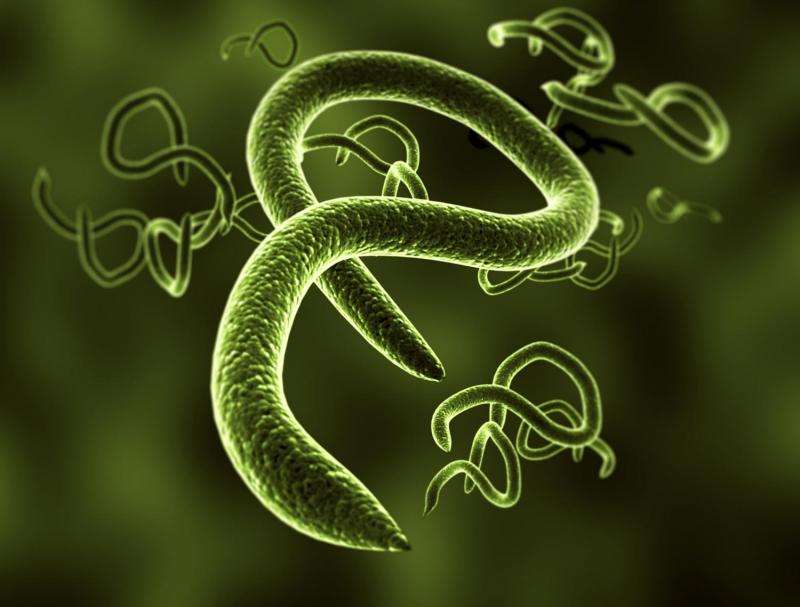Using nanoparticles to detect deadly viruses

A system composed of two different types of nanoparticles can be used to accurately, sensitively and quickly detect viruses.
The earlier a viral infection is detected, the more effective the treatment. Currently available tests are accurate but require a long time and/or specialized personnel, which are not a given in many outbreak settings. To address this, a team of researchers from The Hong Kong Polytechnic University developed a biosensor that detects Ebola and avian influenza subtype H7 viruses.
The team prepared gold nanoparticles (AuNPs) carrying 'probes' derived from the viral sample being tested. They also tagged 'upconversion nanoparticles' (UCNPs), which emit green light when hit by a near infrared laser, with probes specific for influenza virus H7 or Ebola. If the sample contains one of the two viruses, the two types of nanoparticles interact, causing the green light emitted by the laser-targeted UCNPs to dim. This process takes place in a short period of time (two hours in the case of the influenza test) and is quantifiable.
The system has proven to be very specific: using viral samples on the AuNPs that were only slightly different from the UCNP viral-specific tags did not yield results. The researchers then anchored the nanoparticles on a nanoporous alumina platform instead of having the two components in liquid solution. This increased the sensitivity of the assay and enabled the detection of 'femtomolar' amounts of virus: equivalent to the lower limit of detection in tests currently used in clinical practice. This is a crucial level of sensitivity, especially in the case of Ebola where early treatment can save lives.
The team is now planning to test the device on various subtypes of influenza and then move on to the fabrication of a multi-target detection platform that can simultaneously detect various subtypes of influenza viruses. The system is still at the research and development stage, but the researchers think it may become available in two to three years.
Provided by Hong Kong Polytechnic University


















